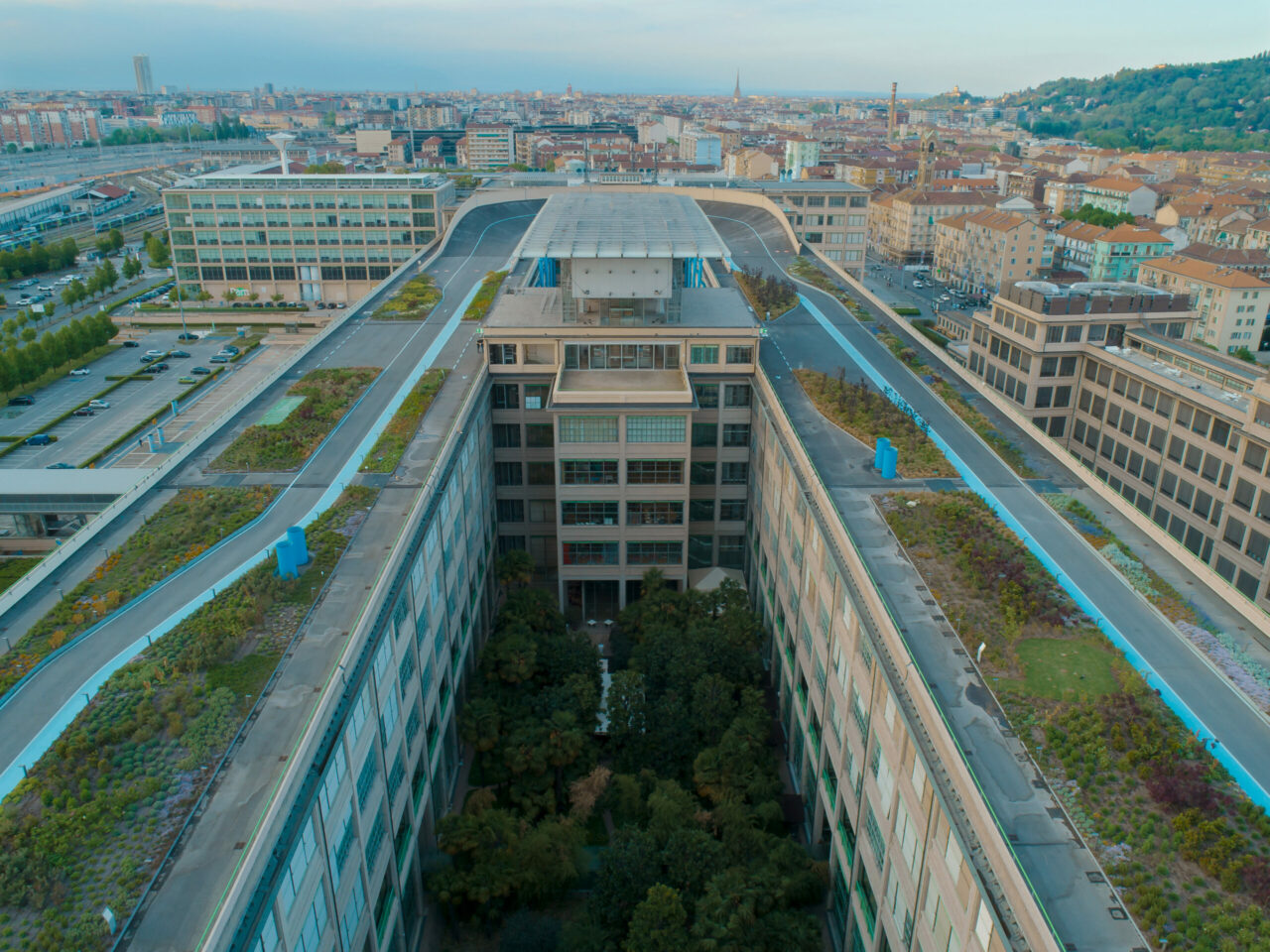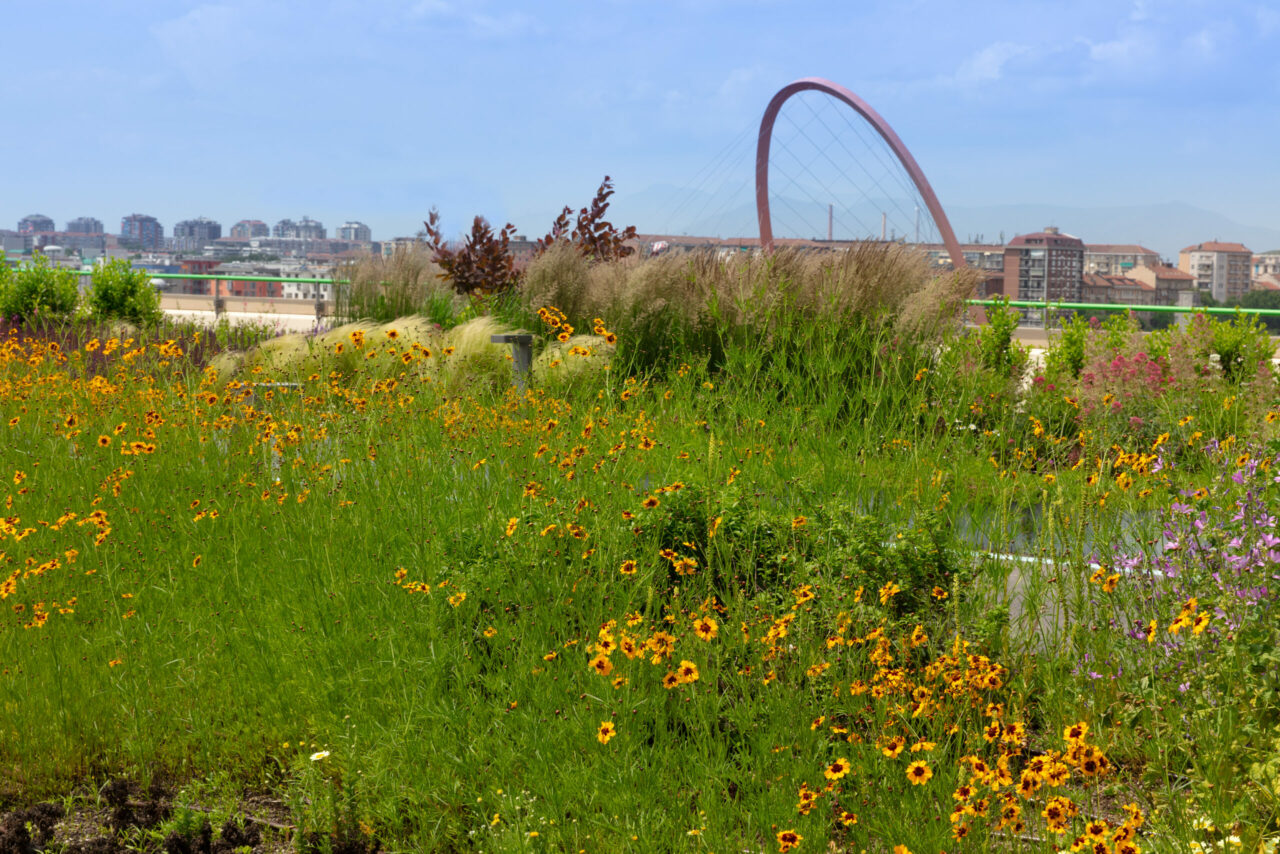Interview: Sarah Cosulich, director Pinacoteca Agnelli
Moritz Gaudlitz: Hello Sarah, today I want to talk with you about your work, strategy and the evolution of Pinacoteca Agnelli in Turin’ Lingotto – one of the most extraordinary buildings in the world and according to architect Le Corbusier „one of the most impressive sights in industry“.
Sarah Cosulich: Sure, with pleasure. Thanks for this opportunity. I’ll tell you a little bit about what was Pinacoteca before and all the work we did. Pinacoteca Agnelli’s evolution presented unique challenges, especially dealing with an existing identity and audience. Rethinking a space with established perceptions is, in many ways, more challenging than starting a new. In 2022, I was called by the president Ginevra Elkann to re-imagine the identity of an institution built around the remarkable collection of its founders Giovanni and Marella Agnelli. This collection, spanning the 700s, 800s, and 900s, is not just a compilation of significant works—it’s a treasure trove of true masterpieces. My mission was to maintain the spirit of the renowned collection while infusing it with fresh meaning. The Pista 500 was of course an existing space, but not yet open to the public.

Sarah Cosulich. ©MyBossWas
MG: The Pista 500 rooftop track, where originally freshly produced Fiat cars were tested, was transformed into an outdoor exhibition path through gardening and artistic installations. Could you share insights into the strategic thinking behind this initiative?
SC: When I arrived in 2022 the Pista’s transformation into a garden had just been done. Recognising its unique potential, I saw a chance for transformation while maintaining the collection’s core. Despite its size, the Pista offered both additional space and a distinct art experience. Inspired by New York’s High Line, our Pista isn’t just a city walk; it’s a symbolic circuit, a landmark for architecture. Initially a brutalist space, it was challenging for art display until the garden turned it into a more welcoming and engaging place. Proposing a project, I envisioned the collection and the Pista as integral. The aim was to make the building’s specificity as crucial as the collection itself. Through site-specific installations, artists could build a stronger connection, tapping into the history of the space, labor, production, and Torino’s unique landscape. This connected Pinacoteca Agnelli to the Lingotto legacy, weaving a narrative that intertwines art, history, and Torino’s specificity.
MG: How can you combine this narrative in the main project lines of the Pinacoteca Agnelli?
SC: We have these three main projects: the collection, continually enriched not only through acquisitions but activations, the third floor as a bridge with pioneering contemporary figures, and the Pista 500 as a space for self-questioning, risk-taking, and collaboration with artists. In developing Pinacoteca’s new identity, we recognised a predominant male narrative—factory cars, a world shaped by men, and a collection mainly comprising male artists. This was an issue, which doesn’t mean we’re just going to invite women artists, but we made a significant statement with Sylvie Fleury, Lee Lozano, and works on La Pista, like Louise Lawler’s birds—a step towards reshaping our story.

Installation view Pinacoteca Agnelli Torino. ©MyBossWas
MG: Speaking of reshaping, if I’ve understood correctly, you only have women in your team, which I think is a pretty good strategy to counteract history and set an example.
SC: Sure, but there is no intention to have only women in the team; it’s what happened by being very neutral at interviews and deciding on the best candidate for the job. We are proud of that but keep working with men because we have a lot of external collaborators, including Fiat engineers and artwork-producing companies, so we joke about it. We embrace the opportunity to work with individuals of all genders and maintain a balanced approach. It’s part of this identity.
MG: How do you manage a team today and how do you communicate internally and externally?
SC: The team here is fantastic. I’ve structured the institution with three departments, each led by individuals who have been actively involved since the beginning. The whole team, including heads of departments, plays a fundamental role, and every resource is precious given our size compared to the workload. I value initiative, and team members for example are exploring how events can bring in new audiences and serve as a funding resource. Education is seen not just as a service but as a valuable resource, and the curatorial team explores connections with other institutions. Diversity within the team is crucial. You know, there’s even a woman as production manager, which deals only with male engineers and Fiat people. Thinking outside the box is essential, because first of all this place is really peculiar, so you really need to be creative and push to find new solutions. Rather than sticking to traditional ways, we focus on meeting objectives and finding new approaches. It’s a different perspective than the perceived stability and intellectualism usually associated with art institutions.
Thinking outside the box is essential.
MG: How would you describe the Lingotto? It is a great, unique and at the same time strange place – like a city within a city. A space where culture, hospitality, services, gastronomy and entertainment all coexist. Do all these different areas benefit each other, is it organic or is it sometimes weird in the constellation?
SC: This is a good question, we are trying to make it organic. Regarding our location near a mall, we initially found it challenging. The contrast between a contemporary art space and a mall posed an image struggle for us to promote this image of sophistication and cultural image. Over time, we’ve learned to work with this context more organically. While differentiating ourselves, we’re realising the potential to open our program to a new audience. With our communication department we’ve done initiatives where we open up to mall visitors. We’ve organised events or educational initiatives for children of mall employees. Today mall-goers can experience the Pista 500 for only two euros. We’ve become less exclusive, less snob and more inclusive, extending our reach beyond the traditional art audience. It’s fascinating to observe how minds change, with visitors initially drawn by the Pista installations eventually deciding to explore the exhibitions on other floors. These installations are not just about reimagining monuments; they also act as keys to creating a new audience for art.
MG: You managed to bring a new audience to the museum. What are your strategies that a cultural institution stays a place open to reflection on contemporary discourse, promoting the inclusion and participation of a range of different audiences?
SC: Our Sylvie Fleury neon work, proclaiming “Yes To All,” is our message about making contemporary art accessible to everyone, even those unfamiliar with it. The emphasis is on discovery, providing an opportunity to explore, learn, and maybe even appreciate something new. The legacy of Fiat and the history of the Lingotto, which we plan to delve deeper into, are becoming fascinating entry points for visitors. Exploring the past adds value to the present, and knowing the factory’s history sparks curiosity. Inclusion, for us, is about mixing diverse interests. People come for various reasons—some for art, others for the building’s architecture reconverted by Renzo Piano, or simply to enjoy a walk with a view of the mountains or the changing landscape. One thing I really wanted from the beginning besides the program is to create a bar. It may seem like a detail, but it transforms the museum experience into a longer, destination-oriented visit. The bar becomes a space for various activities—lunch, studying, or using Wifi. This addition has contributed to tripling our visitor numbers, making the museum a vibrant and functional space on the city’s map, not just as a museum but as a pleasant destination to be explored and rediscovered.

Sylvie Fleury - Yes to all. ©Andrea Guermani
MG: At the Lingotto, the Pinacoteca Agnelli is the space more powerful than the content or can the content beat the space?
SC: No, the content needs to beat the space! While the mix is ideal, the space is activated by the content. We view the neutral space as a container that needs to be narrated, and the content is fundamental to that narration. Our ambition is to present exhibitions featuring artists relevant to our contemporary moment and significant for our history. We catch artists at the right moment, and their visibility often experiences a fantastic development after being showcased here.
MG: Besides working as the director of the Pinacoteca Agnelli you curate shows internationally and work with companies. How does this differ for you in terms of strategy?
SC: I like the word strategy. Many of my public or institutional engagements have been the results of winning competitions. Whether directing Pinacoteca Agnelli or collaborating with Mutina, a design company, the strategy involves shaping exhibition programs that align with the identity and functioning of each space. At Mutina, turning contemporary art into a tool for creativity involves creating a space and a program, not just exhibitions. This adaptable strategy includes artist prizes, collaborations with international institutions, and exhibitions in Milan and Modena. The mission is to bring art closer to both clients and staff, fostering creativity within the company. Additionally, I’m responsible for an artist archive, managing Lydia Silvestri’s work from the 1960s to 2018. So how do you make it accessible to the public and make it known internationally? I think I apply always the same logic of strategy to benefit the final purpose with approaches that necessarily include different publics.

Louise Lawler - Birdcalls. ©Sebastiano Pellion di Persano
MG: Today, more and more companies or businesses are starting to learn from cultural institutions or are trying to integrate culture into their decision-making and strategy-building. Do you think that cultural institutions like museums need to be more entrepreneurial?
SC: Yes, they’ve always needed that approach. While for directors being art historians is fundamental, understanding the challenges and developments in the art world is equally essential. They need to grasp the needs of both artists and the public, considering not only artistic aspects but also funding requirements. Entrepreneurial skills are necessary, but not in the dry sense of looking at numbers, but yes, with a vision that takes everybody into consideration.
MG: Thank you so much. Maybe one last question to sum it up. How many kilometres do you walk normally on an average day on the Pista 500?
SC: A lot. It’s our exercise, you know. We don’t need any more any extra exercise. I like to say that we are a museum that can be measured in kilometers.